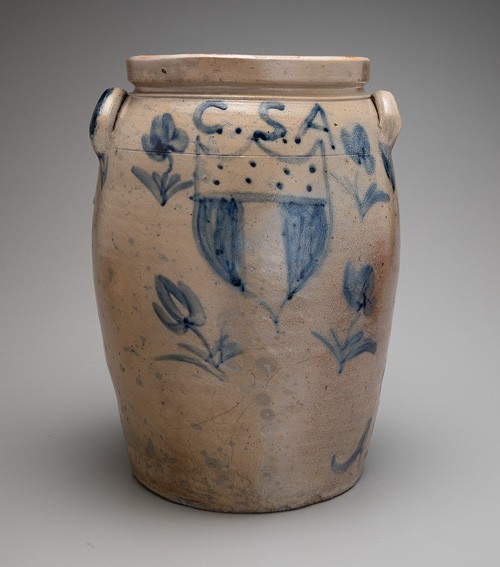
Jar, attributed to the Keesee & Parr Pottery, Richmond, Virginia, ca. 1861. Salt-glazed stoneware jar with cobalt decorations. H. 17 1/2". (William C. and Susan S. Mariner Private Foundation; photo, Robert Hunter.)
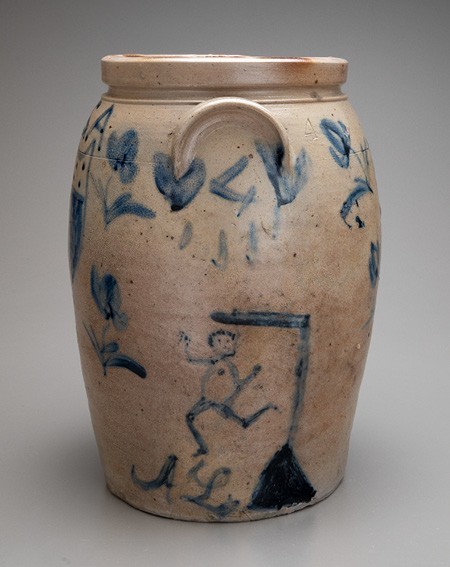
Second view of the jar illustrated in fig. 1. Inscribed: “4” (four gallons). (Photo, Robert Hunter.)
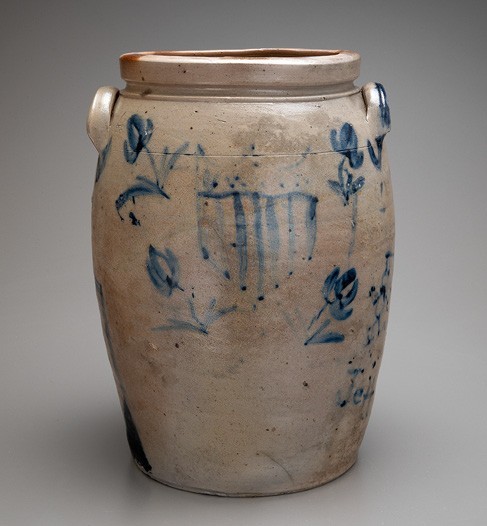
Third view of the jar illustrated in fig. 1. (Photo, Robert Hunter.)

Fourth view of the jar illustrated in fig. 1. (Photo, Robert Hunter.)
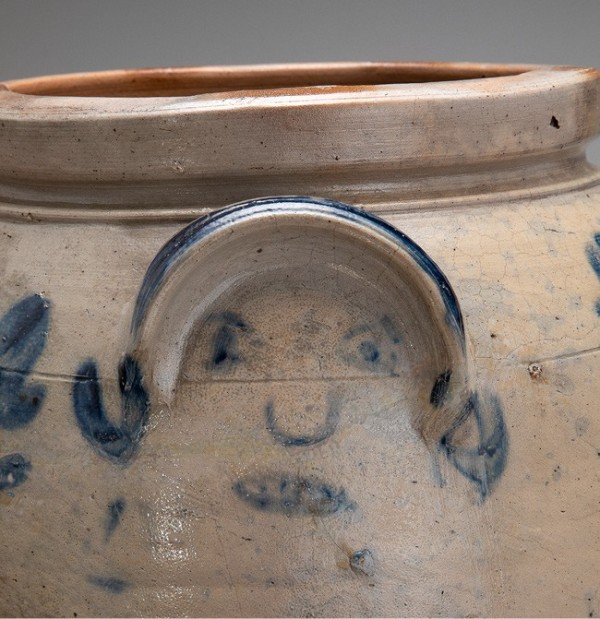
Detail of the decoration under the handle of the jar illustrated in fig. 4. (Photo, Robert Hunter.)
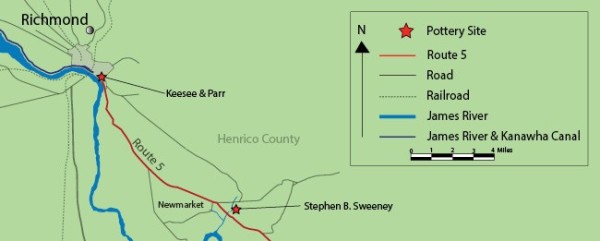
Map of the Richmond area of Virginia, showing the locations of the Keesee & Parr stoneware pottery and the Stephen S. Sweeney pottery.
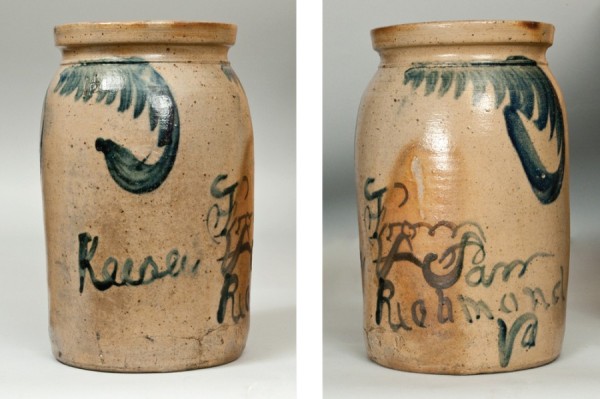
Jar, Keesee & Parr Pottery, Richmond, Virginia, 1860–1865. Salt‑glazed stoneware. H. 14". Capacity: 3 gallons. Inscribed in cobalt: “Keesee & Parr / Richmond / Va” (Courtesy, The Valentine; photo, Crocker Farm Auctions.)

Churn, Fulton Pottery, Alleghany County, Virginia, 1867–1885. Salt-glazed stoneware. H. 16". (Kurt Russ Collection; photo, Gavin Ashworth.) This four-gallon churn is decorated with a brushed blue-cobalt floral design and includes a centrally placed “palm” tree and signature.

Churn, Fulton Pottery, Alleghany County, Virginia, 1867–1885. Salt-glazed stoneware. H. 17 1/8”. (Kurt Russ Collection; photo, Gavin Ashworth.) A five-gallon churn with a flaring rim, a well-defined collar, and applied crescent-shaped extruded handles exhibiting elaborate brushed manganese-dioxide decoration, including horizontally and vertically oriented floral motifs, a centrally placed “5” indicating vessel capacity, and the signature “G. N. Fulton” enclosed by horizontal wavy lines.
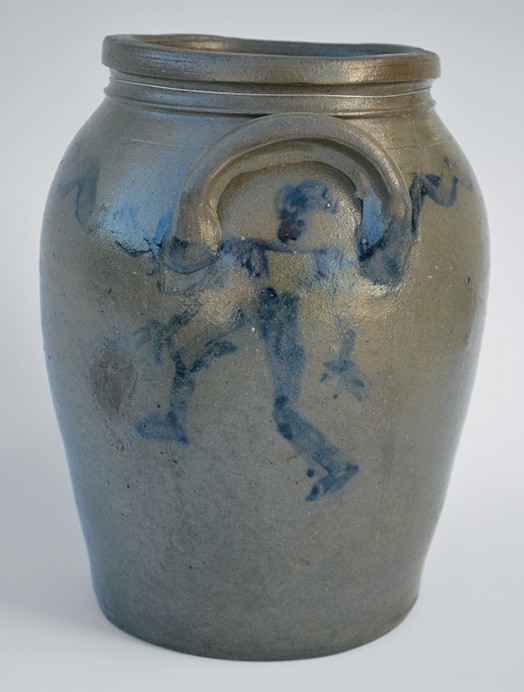
Storage jar, attributed to Stephen B. Sweeney, Henrico County, Virginia, 1838–1863. Salt-glazed stoneware. H. 9 ½". (Private collection; photo, Kurt Russ.) The decorative motif on this one-gallon jar is a brushed-cobalt dancing man beneath one of the handles.
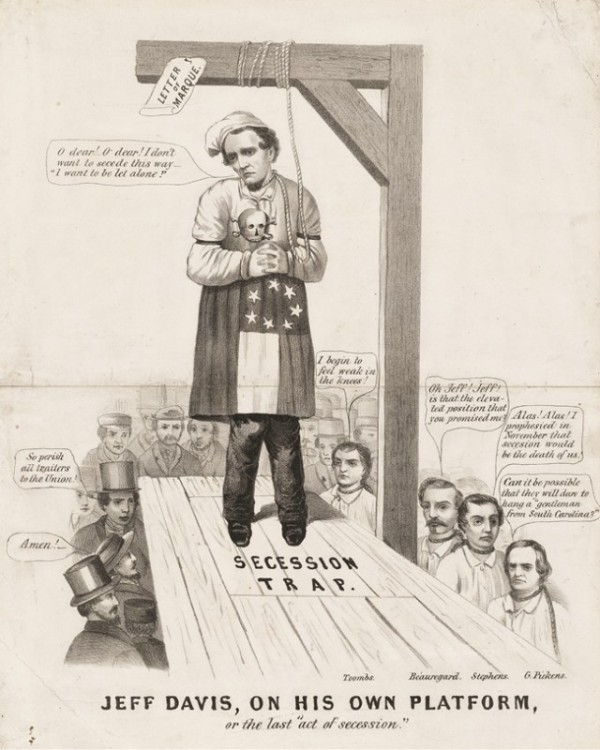
“JJEFF DAVIS, ON HIS OWN PLATFORM, or the last ‘act of secession.’ ” Currier & Ives, New York, ca. 1861. Lithograph on wove paper. 12 13/16” x 11". (Library of Congress.)
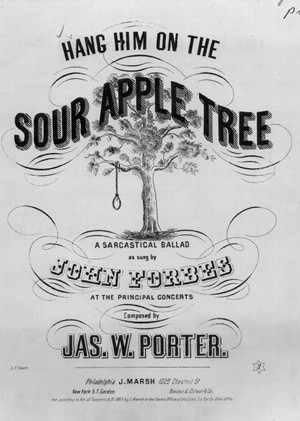
James W. Porter, Hang Him on the Sour Apple Tree, J. Marsh, Philadelphia, 1865. Notated music. (Library of Congress.) https://www.loc.gov/item/ihas.200001255/.
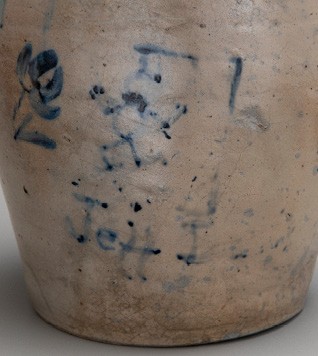
Detail of the jar illustrated in fig. 4.

Detail of the jar illustrated in fig. 2. Inscribed: “A L.” Note how the script of the letters is similar to those used on the signed Keesee & Parr jar illustrated in fig. 7.

“The Rail Candidate,” Currier & Ives, New York, 1860. Lithograph. 10 5/8” x 14 1/8”. (Library of Congress.)
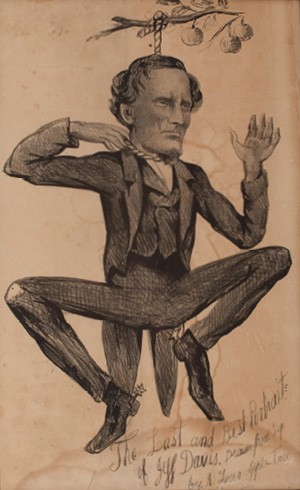
Jefferson Davis, undated. Drawing on paper. 10 ¼" x 16 ½". Handwritten inscription in lower right: “The Last and Best Portrait of Jeff Davis. Drawn from Life by A Sour Apple Tree.” (Heritage Auctions.) The drawing shows the president of the Confederate States struggling as he hangs from an apple tree.

“Mistress Columbia,” Harper’s Weekly 4, no. 158 (January 7, 1860): 16. (Library of Congress.)

“Columbia Awake at Last,” Harper’s Weekly (June 8, 1861): 368. (Wikimedia Commons.)

Gilbert Stuart (1755–1828), George Washington, begun 1795. Oil on canvas. 30 ¼" x 25 ¼". (Metropolitan Museum of Art.)
